Positive Health Online
Your Country

Reconnecting with the Pelvis. Advice from the Ancestors
by Jonathan Lawrence(more info)
listed in craniosacral therapy, originally published in issue 269 - March 2021
I believe that a paradigm shift to an holistic world view is taking place. This may be hard to reconcile with the actions to contain SARS Co-V-2 that seems to reprise the battle against nature ‘red in tooth and claw’. While science, technology and medicine have consigned the deadly acute illnesses of the past to history we have a corresponding rise in chronic disease that is manifesting in younger people.
Whilst there may be a number of reasons for this, one factor is that we are undoubtedly living in a way for which we are not designed.
As far as can be ascertained humans evolved as nomadic hunter gatherers. Psychologically and physically, we have hardly changed, yet we live in large communities insulated from our immediate environment in which much communication takes place electronically and distantly. We do much of our living in our heads and on our screens.
The hunter gatherer would have spent a lot of time in the outdoors, their bodies in motion, their senses engaged with the environment. They would have to be well attuned socially, physically and psychically with the rhythms of the day and the seasons.
It seems reasonable therefore that despite our stunning advances in the way we live and our understanding of nature, that we would suffer in some way from what we have lost. Whilst I am not advocating for us to dispense with all of the advantages, we have gained over the centuries I do believe that we can learn from our ancestors.
My special interest as an osteopath is in body mechanics. One area in which we diverge from the ancestors in in the fact that most of us spend a great deal of time sitting down. There are a number of studies that suggest this has a significantly negative effect on our health.[1]
To me it is shocking that infants have to sit several hours a day for many weeks in a year at school at a time of life that is crucial to their physical development. In addition, their leisure time is often involved with being still and looking at screens. This is bound to have a negative impact on their physical, social and psychological functioning.
We use our pelvis for sitting. Osteopathically the pelvis has a key role in the aetiology of low back pain, the issue that is most common in the osteopath’s practice. Osteoarthritis of the hip is another common manifestation of chronic pelvic misuse.
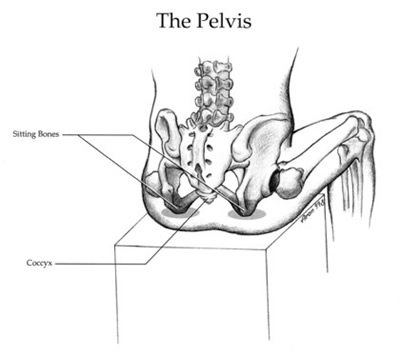
Fig 1. Spine and Pelvis in Sitting Position [2]
In addition, pelvic dysfunction may be associated with gut, gynaecological, reproductive and urinary dysfunction and pathology.
Let’s ask the ancestors how we can improve our pelvic health. First, they would say is that we should be moving about. There are many exercises that are excellent for improving pelvic function, Pilates and yoga for example. However, the ancestors walked a lot and bent and stretched. They would do this unselfconsciously as part of their being. In order to mimic this as much as possible in the modern world I would simply recommend daily walks in the fresh air. For bending and stretching, gardening is as good an exercise as you can do. In addition, you could also cultivate some organic food replete with soil microbiome to help maintain yours!
These exercises will go a long way to help manage pelvic issues that result from sitting but maybe there is something we can do to improve our sedentary health as well.
Sitting crossed legged or in a squatting position, as the ancestors did and many cultures in the world still practise, would go a long way to rectify many of these issues. I have been experimenting with squatting with patients. Most of them haven’t been able to sit naturally in this position for many years and even decades in some case. The body adapts to modern habits. In addition, the vast majority of foot wear has a heel higher than the forefoot, thus shortening the Achilles tendon and restricting dorsiflexion. We also don’t flex the hip beyond 90 degrees or so normally. This is reflected in a web search for videos demonstrating the physiology of hip flexion where flexion beyond 90 degrees does not seemed to be deemed significant.
The reason I mention this will be revealed below.
If one looks at images from cultures where squatting is still practised all their live, it will be observed that it looks comfortable.
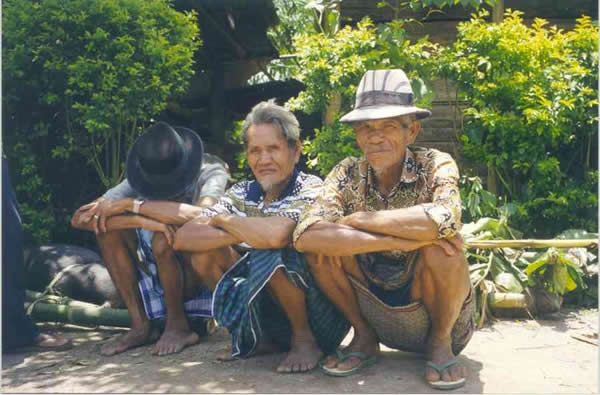
Fig 2. Natural Squatting Position [3]
I first experimented in retraining the squatting posture on myself with some advice from a Pilates instructor. This involves two parts: the first is doing dynamic squats such as part of the four-minute workout devised by Dr Zach Bush.[4] The second is get the subject to sit in a natural squat comfortably. Most people cannot achieve this with the heels flat on the ground. A book or a cushion can be used to raise the heel to allow a natural squat. The level of support chosen in the minimum height to achieve the posture. This has numerous potential health benefits.[5, 6, 7]
The four-minute workout is done three times a day and the stationary squat for two minutes a day. Form is extremely important, and nothing should be forced or rushed. The key is to stress the tissues sufficiently and over a long enough period of time to achieve a healthy adaptation. The main problem that may arise is if there is a significant degree of osteoarthritis or similar joint pathology of the knees, hips or spine in which case as they say consult your osteopath or therapist.
The time period required is months to years depending on the age of the person and the state of their tissues. The key issue to unlock success is regularity. As this regime takes up so little time the only issue that prevents success is psychological!
Over a period of time the dynamic squatting motion becomes smoother. The squat becomes deeper tensioning, stretching and strengthening the thigh muscles. Helps brain function. In addition, this opens the pelvic floor.
The sitting squat is interesting because after the hips are flexed more than 90 degrees, the back stretches and the sacrum is tucked under. As the hips flex further the hip seems to drop away from the socket, stretching the ligaments, also the thigh muscles, especially the adductors are placed under tension as is the femur. Also, the calf muscles and the Achilles tendons are lengthened. The ankle is made to increase dorsiflexion.
Initially adaptation is fairly rapid, and the degree of heel lift required to gain the squatting position can be reduced. However as with most conditioning and adaptation regimes there will be period where progress slows. This is normal and it helps not to be fixated on the end point just the process. Very Zen!
The aim is ultimately to achieve this position comfortably with feel flat. Even if this for whatever reason is too much for the physiology to achieve, for example, if there has been too much time elapsed between childhood and the commencement of the regime, there will still be significant benefits.
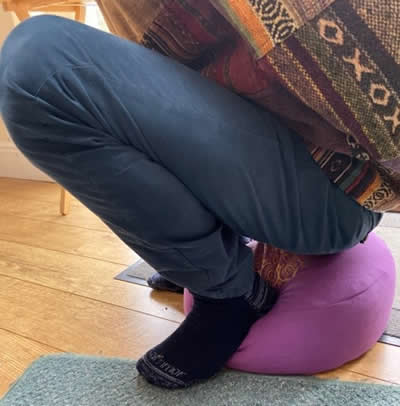
Fig 3. Comfortable Squatting Position with Heel Support
How Can this be Used in Clinic?
Peter (name changed) is a 58-year-old man. He suffers with recurrent low back pain that has been managed over the years by regular treatments every 6 weeks. In addition, he began to suffer with urinary urgency and was getting up several time in the night to urinate. He was diagnosed with benign prostatic hypertrophy.
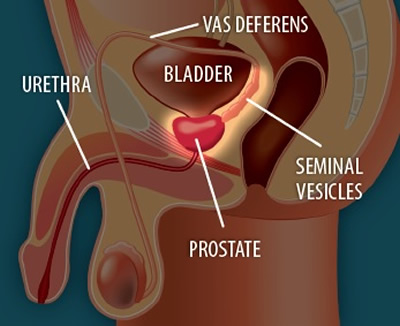
Fig 4. Location of Prostate Gland [8]
He has always had a sedentary job sitting for hours at a computer. In his early years he played rugby and football and he enjoys running.
On initial examination, loss of lumbar curve was found along with vertebral facet joint restriction in the lower lumbar vertebrae. The right sacro-iliac ligaments were very tender, and the anterior superior iliac spine was superior on the right. The FABER test demonstrated reduced motion in the right hip.
Soft tissue work articulation and facet joint manipulation allowed improved functionality and less pain.
In addition, Peter agreed to try the squatting regime for the back but also to help release the pelvic floor. The dynamic squat would allow a pumping mechanism to relieve congestion around the prostate and the sitting squat should allow more space around the organ. We also started on a dietary regime with supplements such as liposomal vitamin C and homeopathic remedies for the prostate.
Initially the sitting squat was hampered by tightness in the right hip adductors. This eventually eased after a few weeks and his mobility in the lumbar spine and the hip joints improved, as did the prostate symptoms. In addition, Peter requires fewer treatments to control the low back pain which is less intense. His hip mobility and comfort has improved as well. Peter also reported that he experience more spring in the extension phase of the squat, something that other patients have reported indicating the improved quality of the soft tissues of the hip.
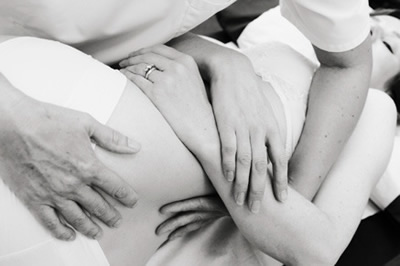
Fig 5. Manual Stretching of Sacro-iliac Joint and Ligaments
Helen, 49 (name changed), a dance teacher suffered with pain at the base of the sacrum and coccyx since giving birth 16 years ago. She had given birth naturally after a prolonged labour but had suffered with this pain since. Her GP suspected that she had fractured the coccyx. She had seen osteopaths and chiropractors since to control the discomfort. In addition, she suffered with constipation and vaginal dryness. She consulted me for craniosacral work.
On examination the sacro-coccyx articulation was found to be flexed and compressed and the ligaments connecting the coccyx to the pelvic floor were under tension. Correcting this using craniosacral techniques reduced the discomfort significantly, but the pelvic floor remained uncomfortable.
.jpg)
Fig 6. Muscles of the Pelvic Floor [9]
A regime of dynamic and static squats was instituted. Helen already had a reasonable degree of flexibility because of her job, and she was able to squat comfortably without and heel support after three months. In addition, her pelvic floor symptoms improved, although it has to be mentioned that she was also taking a course of homeopathic remedies too. She also reported a greater spring in her tissues.
It would be unreasonable to expect that we all go back to being hunter gatherers and give up the comforts of civilization. However, we live in a time where we seem to not only be getting further away from using our bodies in the way they were designed, but also developing associated physical and mental health issues. Perhaps it would be wise to take stock and ask the ancestors for some advice.
References
- https://www.nhs.uk/live-well/exercise/why-sitting-too-much-is-bad-for-us/
- https://alexanderteachingstudio.com/wp-content/uploads/2014/04/pelvis2.jpg?w=300
- https://www.quora.com/Why-cant-everyone-do-the-Asian-squat
- https://youtu.be/PwJCJToQmps
- https://obgynal.com/why-sitting-too-long-is-bad-for-your-health/
- https://fitness.mercola.com/how-to-do-squats.aspx
- http://www.naturesplatform.com/health_benefits.html
- https://dailytimes.ng/prostrate-enlargement-condition-watch-men-clock-40/
- https://www.freepnglogos.com/pics/muscles
Comments:
-
Sally Neish said..
Really, really good article and thank you. My husband is now determined to try to get back to his old squatting days and to help relieve some of the night time trips to the toilet. Do you reckon it would work as well for a woman?!